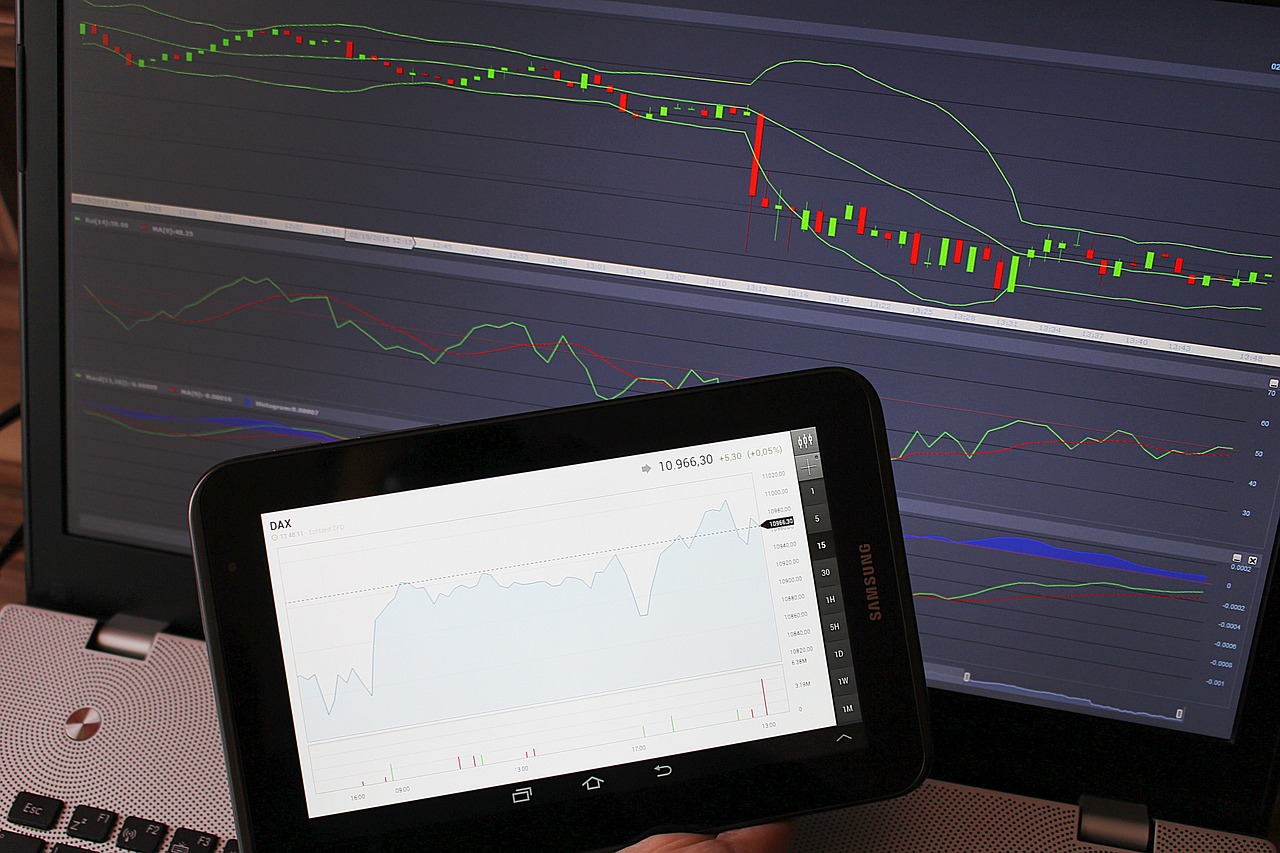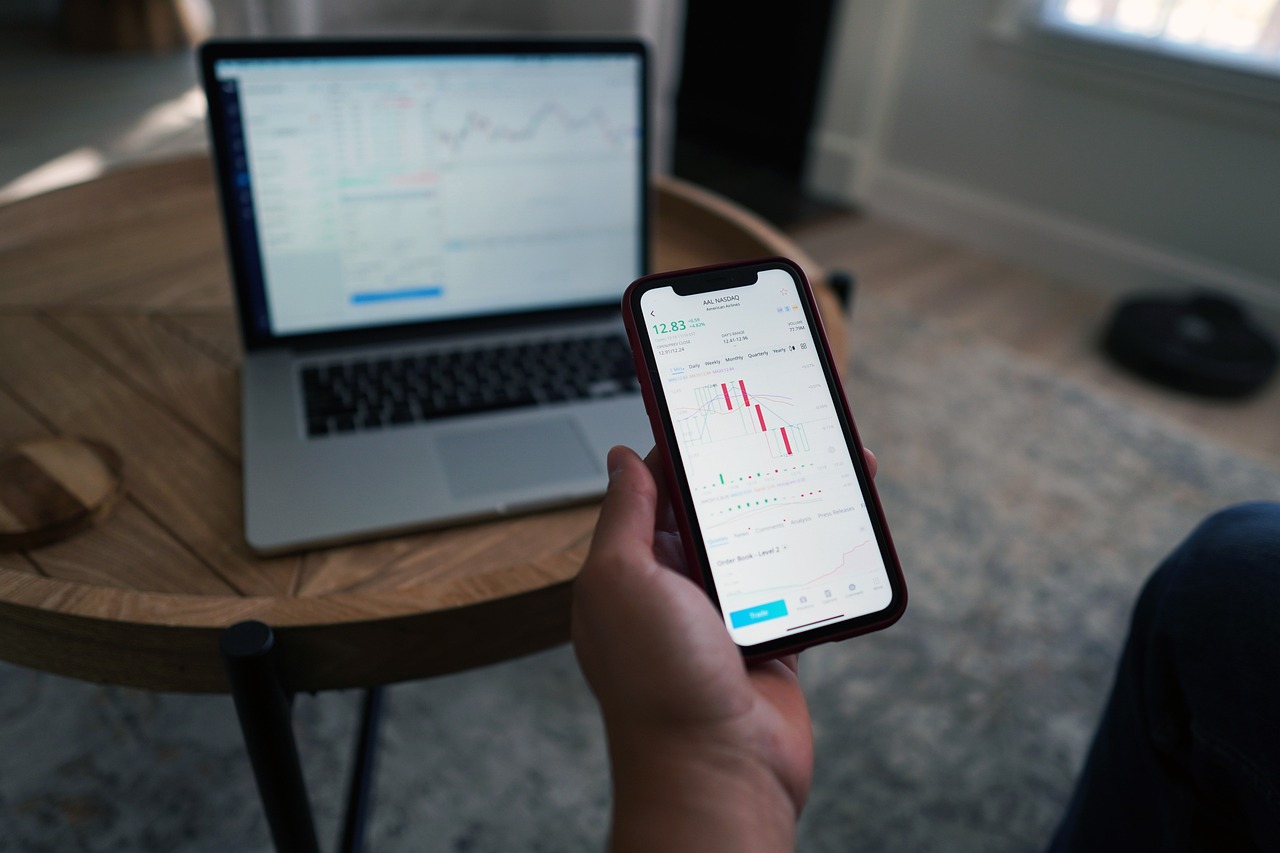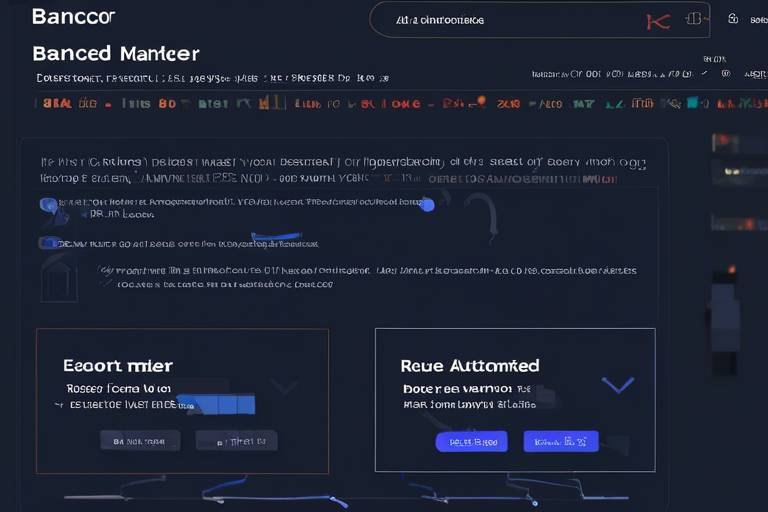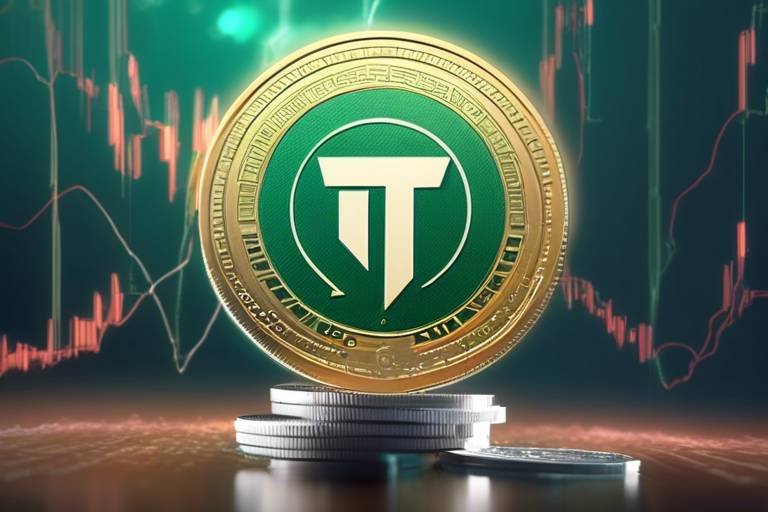Serum - Decentralized Trading Protocol on Solana
Welcome to the exciting world of Serum, a groundbreaking decentralized trading protocol that has taken the Solana blockchain by storm! If you're curious about how this innovative platform is reshaping the landscape of decentralized finance (DeFi), you're in the right place. Serum isn't just another trading protocol; it’s a game-changer that combines speed, efficiency, and flexibility to create a seamless trading experience. Imagine being able to trade assets without the usual bottlenecks and high fees that plague traditional exchanges. That's the promise of Serum, and it’s making waves in the DeFi ecosystem.
Serum operates on the principles of decentralization, which means that it empowers users by giving them control over their assets without relying on central authorities. The beauty of Serum lies in its architecture, which leverages Solana’s high-speed infrastructure to facilitate low-latency transactions and on-chain order books. This means that trades can be executed in the blink of an eye, making it perfect for traders who thrive on quick decision-making and market movements. But what does this mean for you, the user? It means that you can trade with confidence, knowing that you're using a platform designed for the demands of modern trading.
In the upcoming sections, we will dive deeper into the features that set Serum apart from other trading protocols. From cross-chain trading capabilities to reduced fees and enhanced security measures, Serum is equipped to handle the challenges of today’s fast-paced trading environment. Whether you're a seasoned trader or new to the DeFi space, understanding Serum's functionalities will equip you with the knowledge to navigate this exciting frontier.
As we explore the various aspects of Serum, we will also compare it to other decentralized trading protocols, providing insights into its unique selling points and performance metrics. Additionally, we will discuss the critical role of liquidity within the Serum ecosystem and how it impacts trading efficiency. So, buckle up as we embark on this journey to uncover the potential of Serum and its influence on the future of decentralized finance!
- What is Serum? Serum is a decentralized trading protocol built on the Solana blockchain, designed for efficient and fast trading.
- How does Serum ensure low latency transactions? Serum utilizes Solana's high-speed infrastructure, allowing for quick execution of trades.
- Can I trade across different blockchains using Serum? Yes, Serum supports cross-chain trading capabilities, enabling users to trade assets from various blockchains.
- What are the security measures in place for Serum? Serum implements robust security features, including smart contract audits and risk management practices to protect users.

Understanding Serum's Architecture
When we talk about Serum, we're diving into a world of decentralized trading that’s built on the robust Solana blockchain. This isn’t just any trading protocol; it's a finely tuned machine designed to operate with speed and efficiency. At its core, Serum utilizes an on-chain order book, which is a game-changer in the decentralized finance (DeFi) space. Imagine a bustling marketplace where buyers and sellers come together in real-time, placing their orders directly on the blockchain. This setup not only enhances transparency but also allows for a more dynamic trading environment.
One of the standout features of Serum's architecture is its ability to leverage Solana’s high-speed infrastructure. Solana is renowned for its lightning-fast transaction speeds, and when you combine that with Serum's on-chain order book, you get a trading experience that feels almost instantaneous. This means no more waiting around for transactions to confirm—a crucial factor for traders who thrive on quick decision-making. The architecture is designed to handle thousands of transactions per second, ensuring that users can execute trades without the dreaded lag that often plagues other platforms.
Moreover, Serum's architecture supports cross-chain trading, which is another feather in its cap. This means that users can trade assets from different blockchains seamlessly, expanding their trading options and enhancing liquidity. Picture this: you want to trade Ethereum for Solana tokens without jumping through hoops or facing excessive fees. With Serum, that’s not just a dream; it’s a reality. The integration of various blockchain networks into Serum’s ecosystem creates a vibrant trading environment where opportunities abound.
To illustrate the efficiency of Serum's architecture, consider the following table that compares Serum with traditional centralized exchanges:
| Feature | Serum (Decentralized) | Centralized Exchange |
|---|---|---|
| Transaction Speed | High (thousands per second) | Moderate (depends on server load) |
| Control of Funds | Users retain control | Exchange holds user funds |
| Transparency | Fully transparent on-chain | Limited transparency |
| Fees | Low | Higher |
In summary, Serum’s architecture is not only innovative but also essential for anyone looking to engage in decentralized trading. The combination of an on-chain order book, the high-speed capabilities of Solana, and cross-chain trading functionality creates a powerful platform that caters to both seasoned traders and newcomers alike. It’s like having the best of both worlds—speed and security—wrapped in a user-friendly interface that promotes an active trading culture.

Key Features of Serum
Serum stands out in the crowded world of decentralized trading protocols, primarily due to its unique architecture and innovative features. One of the most impressive aspects of Serum is its on-chain order book. Unlike many other decentralized exchanges that rely on automated market makers (AMMs), Serum operates with a traditional order book model, which allows for more efficient price discovery and greater flexibility for traders. This design not only enhances the trading experience but also allows for cross-chain trading capabilities, enabling users to trade assets from different blockchains seamlessly. Imagine being able to trade Bitcoin for Ethereum without the hassle of centralized exchanges; that's the power Serum brings to the table!
Another significant feature of Serum is its low latency transactions. Built on the Solana blockchain, Serum benefits from Solana's high throughput and fast block times, which means that trades can be executed in the blink of an eye. This speed is crucial in the world of trading, where every millisecond counts. For traders, this translates into a more responsive and engaging trading experience, allowing them to react swiftly to market changes.
Furthermore, Serum's support for various decentralized applications (dApps) is a game-changer. Developers can easily integrate Serum's trading functionalities into their applications, creating a rich ecosystem of services and tools. Whether it's lending platforms, yield farmers, or NFT marketplaces, Serum's infrastructure can enhance these platforms by providing robust trading capabilities. The synergy between Serum and dApps is akin to a well-oiled machine, where each component works together to create an efficient and user-friendly environment.
In addition to these features, Serum offers advanced order types, including limit orders and market orders, which cater to both seasoned traders and novices alike. This flexibility allows users to tailor their trading strategies to meet their specific needs, whether they prefer to take quick profits or wait for the perfect entry point. The ability to use advanced order types in a decentralized context is a significant leap forward for the DeFi space.
Lastly, the community-driven development model of Serum ensures that it evolves with the needs of its users. By encouraging feedback and contributions from the community, Serum can adapt and innovate continuously. This approach fosters a sense of ownership among users, who feel invested in the platform's success.
In summary, Serum's key features—its on-chain order book, low latency transactions, support for dApps, advanced order types, and community-driven development—make it a formidable player in the decentralized finance landscape. These elements not only enhance the trading experience but also contribute to the overall growth and sustainability of the DeFi ecosystem.
- What is Serum? Serum is a decentralized trading protocol built on the Solana blockchain that offers a high-speed trading experience with an on-chain order book.
- How does Serum enable cross-chain trading? Serum's architecture allows for the seamless trading of assets across different blockchains, enhancing liquidity and trading options.
- What advantages does Serum offer over traditional exchanges? Serum provides lower fees, enhanced security, and faster transaction speeds compared to centralized exchanges.
- Can developers integrate Serum into their applications? Yes, Serum supports integration with various decentralized applications, allowing developers to enhance functionality and user experience.
- How does Serum ensure security? Serum implements rigorous security measures, including smart contract audits and risk management practices, to protect users and their assets.

Benefits of Using Serum
When it comes to decentralized trading protocols, Serum stands out from the crowd, and for good reason. One of the most compelling advantages of using Serum is its ability to offer reduced fees. Traditional trading platforms often come with hefty fees that can eat into profits, but Serum leverages the efficiency of the Solana blockchain to keep costs low. This means that traders can execute their strategies without worrying about excessive transaction costs, allowing them to maximize their returns.
Another significant benefit is enhanced security. In the world of decentralized finance (DeFi), security is paramount. Serum employs various security measures, including rigorous audits and smart contract safety protocols, to protect users and their assets. This focus on security helps build trust within the community, ensuring that traders can participate with confidence. After all, who wants to risk their hard-earned assets on a platform that doesn't prioritize safety?
Moreover, Serum takes full advantage of Solana's impressive scalability. This means that users can enjoy high-speed transactions without the usual bottlenecks that plague many other decentralized exchanges. Imagine being in a fast-paced trading environment where every second counts; with Serum, you can execute trades in the blink of an eye. This is particularly beneficial for high-volume traders who rely on speed to capitalize on market movements.
Additionally, Serum supports a wide array of decentralized applications (dApps), providing developers with the tools they need to create innovative trading solutions. By integrating Serum into their dApps, developers can enhance functionality and user experience. This not only benefits the developers by expanding their reach but also enriches the trading ecosystem as a whole. The more dApps that utilize Serum, the more robust the platform becomes.
Finally, let's not overlook the cross-chain trading capabilities that Serum offers. This feature allows traders to access assets from different blockchains, providing greater flexibility and opportunities for profit. In a world where assets are increasingly fragmented across various networks, Serum’s ability to facilitate seamless cross-chain transactions is a game-changer. It opens up a whole new world of trading possibilities that can lead to better liquidity and more diverse trading strategies.
In summary, the benefits of using Serum are manifold. From reduced fees and enhanced security to high-speed transactions and cross-chain capabilities, Serum is designed to empower both traders and developers. As the DeFi landscape continues to evolve, Serum is poised to play a pivotal role in shaping the future of decentralized trading.
- What is Serum? Serum is a decentralized trading protocol built on the Solana blockchain that offers a wide range of features for traders and developers.
- How does Serum ensure security? Serum employs rigorous audits, smart contract safety measures, and risk management practices to protect users and their assets.
- Can I trade assets from different blockchains on Serum? Yes, Serum supports cross-chain trading, allowing users to trade assets from various blockchains seamlessly.
- What are the fees associated with using Serum? Serum has significantly lower fees compared to traditional trading platforms, making it a cost-effective option for traders.
- How can developers integrate Serum into their dApps? Developers can utilize Serum's APIs and SDKs to enhance the functionality of their decentralized applications.

How Serum Compares to Other Protocols
When diving into the world of decentralized trading protocols, it's essential to understand how Serum stacks up against its competitors. In the vast ocean of decentralized finance (DeFi), Serum isn't just another fish; it's a powerful shark. What sets it apart? Let's break it down.
First off, Serum boasts a unique on-chain order book that allows for real-time trading, a feature that many other protocols lack. While some decentralized exchanges (DEXs) use automated market makers (AMMs) that rely on liquidity pools, Serum's order book model offers traders more control over their trades. This means you can set specific prices and execute trades with precision, similar to traditional exchanges. Imagine being able to place a limit order in the world of crypto—Serum makes that possible!
Another standout feature is Serum's cross-chain trading capabilities. In a landscape where interoperability is key, Serum shines by allowing users to trade assets across different blockchains seamlessly. This is a game-changer, especially when compared to other protocols that might restrict users to trading only within their native ecosystem. For instance, while many platforms focus solely on Ethereum-based tokens, Serum opens the door to a wider array of assets, making it a more versatile choice for traders.
In terms of transaction speed, Serum leverages the lightning-fast capabilities of the Solana blockchain. With transaction times averaging around 400 milliseconds, it significantly outpaces many alternatives. For traders, this means less time waiting and more time trading. In contrast, some popular DEXs can experience delays, especially during peak trading hours, leading to missed opportunities and frustrated users.
When we look at fees, Serum also holds a competitive edge. The protocol is designed to offer low transaction costs, making it attractive for both casual traders and high-frequency traders. In fact, the average transaction fee on Serum can be as low as $0.00001, which is a fraction of what users might pay on other platforms. This cost-effectiveness can lead to significant savings, especially for those who trade frequently.
However, it's not just all about speed and costs. Security is paramount in the DeFi space, and Serum has implemented robust measures to protect its users. Unlike some protocols that have faced scrutiny over their security practices, Serum's smart contracts undergo rigorous audits and testing. This level of diligence helps to instill trust among users, making them feel safer when trading their assets.
To better illustrate how Serum compares to its competitors, let's take a look at a brief comparison table:
| Feature | Serum | Other Protocols |
|---|---|---|
| Order Type | On-chain order book | AMM or limited order types |
| Transaction Speed | ~400 milliseconds | Varies (often slower) |
| Transaction Fees | ~$0.00001 | Higher (varies widely) |
| Cross-Chain Trading | Yes | Limited or no |
| Security Audits | Regular audits | Varies |
In summary, while there are many decentralized trading protocols available, Serum's combination of an on-chain order book, fast transaction speeds, low fees, and security measures makes it a formidable player in the DeFi arena. It's like having the best of both worlds—traditional trading benefits combined with the innovative features of blockchain technology. So, whether you're a seasoned trader or just dipping your toes into the crypto waters, Serum offers a compelling option worth considering.
- What is Serum? Serum is a decentralized trading protocol built on the Solana blockchain that features an on-chain order book for efficient trading.
- How does Serum ensure security? Serum implements rigorous audits and testing of its smart contracts to protect users and their assets.
- Can I trade assets from different blockchains on Serum? Yes, Serum supports cross-chain trading capabilities, allowing for seamless trading across various blockchains.
- What are the transaction fees on Serum? Transaction fees on Serum can be as low as $0.00001, making it a cost-effective option for traders.

Liquidity Solutions on Serum
In the bustling world of decentralized finance (DeFi), liquidity is the lifeblood that keeps markets flowing smoothly. Serum, a cutting-edge trading protocol built on the Solana blockchain, has developed a robust liquidity framework that not only ensures efficient trading but also fosters a vibrant ecosystem for traders and developers alike. But what does this mean for you? Let’s dive into the intricacies of Serum's liquidity solutions and understand why they are pivotal for the overall health of the trading environment.
At the heart of Serum's liquidity solutions lies the concept of liquidity providers (LPs). These are individuals or entities that contribute assets to the Serum liquidity pools, enabling traders to buy and sell assets without significant price slippage. By providing liquidity, LPs earn rewards in the form of transaction fees, making it an attractive proposition for those looking to generate passive income. In essence, LPs act like the water in a river, allowing the trading ecosystem to flow seamlessly.
One of the standout features of Serum's liquidity mechanisms is its on-chain order book. Unlike many decentralized exchanges that rely on automated market makers (AMMs), Serum utilizes a traditional order book model, which allows for more precise control over trades. This means that traders can place limit orders and have their trades executed at specific prices, enhancing the overall trading experience. This model not only increases liquidity but also provides a more familiar trading environment for users transitioning from centralized exchanges.
To illustrate how Serum's liquidity solutions operate, let’s take a closer look at the following table:
| Liquidity Mechanism | Description | Benefits |
|---|---|---|
| Liquidity Providers | Users who contribute assets to liquidity pools | Earn transaction fees and provide market depth |
| On-chain Order Book | A traditional model for executing trades | Enables limit orders and reduces slippage |
| Cross-Chain Integration | Facilitates trading across different blockchain networks | Increases asset availability and trading opportunities |
Moreover, Serum's innovative approach to cross-chain trading significantly enhances liquidity. By allowing assets from different blockchains to be traded on its platform, Serum opens up a world of possibilities for traders. Imagine being able to trade Bitcoin against Ethereum directly on a decentralized platform without the need for a centralized intermediary. This cross-chain capability not only increases the variety of assets available for trading but also attracts a broader audience, further boosting liquidity.
Additionally, Serum employs advanced algorithms to optimize order matching and execution, ensuring that trades are completed quickly and efficiently. This low-latency trading environment is crucial, especially in a market where every second counts. Traders can rest assured that their orders will be filled promptly, minimizing the risk of missing out on favorable market conditions.
In summary, Serum's liquidity solutions are a testament to its commitment to creating a thriving trading ecosystem. By empowering liquidity providers, utilizing an on-chain order book, and embracing cross-chain capabilities, Serum not only enhances the trading experience but also solidifies its position as a leader in the DeFi space. As we look to the future, it’s clear that Serum's innovative liquidity strategies will play a significant role in shaping the landscape of decentralized trading.
- What is a liquidity provider? A liquidity provider is an individual or entity that contributes assets to a liquidity pool, enabling seamless trading and earning transaction fees in the process.
- How does Serum's order book differ from other decentralized exchanges? Serum utilizes an on-chain order book model, allowing for more precise trade execution through limit orders, unlike many decentralized exchanges that rely solely on automated market makers.
- Can I trade assets from different blockchains on Serum? Yes! Serum supports cross-chain trading, allowing users to trade assets from various blockchains, increasing the diversity of trading options.

Integrating Serum with dApps
Integrating Serum into decentralized applications (dApps) is a game-changer for developers looking to leverage the power of decentralized trading. Imagine you’re building a dApp that requires a robust trading engine; Serum provides that and much more. By utilizing Serum’s on-chain order book, developers can create seamless trading experiences that are not only efficient but also user-friendly. This is particularly important in the fast-paced world of decentralized finance (DeFi), where speed and reliability can make or break a trading platform.
One of the standout features of Serum is its cross-chain trading capabilities. This allows dApps to interact with various blockchain networks, providing users with a wider array of trading options. For instance, if your dApp is primarily built on Ethereum, integrating Serum means your users can trade assets from Solana without needing to leave your platform. This interoperability is crucial in today’s multi-chain ecosystem, where users expect flexibility and convenience.
Moreover, the integration process itself is designed to be straightforward. Developers can utilize Serum’s API to connect their dApps to the Serum protocol, which opens up a world of possibilities. With just a few lines of code, you can enable trading features, access liquidity pools, and even implement advanced trading strategies. This ease of integration not only saves time but also allows developers to focus on enhancing other aspects of their dApp, such as user interface and experience.
Here are some key benefits of integrating Serum with your dApp:
- Enhanced User Experience: By offering direct trading capabilities, users can execute trades without needing to navigate away from your dApp, leading to a smoother experience.
- Access to Liquidity: Serum’s liquidity pools provide the necessary depth for trades, ensuring users can buy and sell assets without significant price slippage.
- Cost Efficiency: With low transaction fees on the Solana network, users can trade without the burden of high costs, making your dApp more attractive.
Additionally, Serum supports various decentralized applications, ranging from simple trading platforms to complex financial instruments. For example, a lending platform can integrate Serum to allow users to trade collateralized assets directly within the application. This functionality not only enhances the platform's offerings but also attracts a broader user base.
In summary, integrating Serum with dApps is not just beneficial; it's essential for developers who want to stay competitive in the DeFi space. The combination of Serum’s powerful features and Solana’s high-speed infrastructure creates an unparalleled trading experience that can significantly elevate any dApp. As the DeFi landscape continues to evolve, those who embrace Serum’s capabilities will undoubtedly find themselves at the forefront of innovation.
Q: What is Serum?
A: Serum is a decentralized trading protocol built on the Solana blockchain that features an on-chain order book, enabling efficient and fast trading.
Q: How does Serum enhance dApps?
A: Serum enhances dApps by providing seamless trading capabilities, access to liquidity, and cross-chain trading options, all while ensuring a user-friendly experience.
Q: Is it difficult to integrate Serum with my dApp?
A: No, integrating Serum is designed to be straightforward. Developers can use Serum's API to quickly connect their dApps, allowing for easy implementation of trading features.
Q: What are the benefits of using Serum over other protocols?
A: Serum offers unique advantages such as low transaction fees, high-speed transactions due to Solana's infrastructure, and a robust liquidity ecosystem, making it a compelling choice for developers.

Security Measures in Serum
In the rapidly evolving world of decentralized finance (DeFi), security is paramount. With the rise of digital assets and the increasing complexity of blockchain technology, users are more concerned than ever about the safety of their funds and personal information. Serum, as a decentralized trading protocol built on the Solana blockchain, takes these concerns seriously and implements a robust suite of security measures designed to protect its users.
One of the foundational aspects of Serum's security is its smart contract audits. These audits are conducted by reputable third-party firms that meticulously review the code to identify vulnerabilities and ensure that the contracts function as intended. This process is crucial because even a minor flaw in the code can lead to significant financial losses. By undergoing regular audits, Serum demonstrates its commitment to maintaining a secure trading environment.
Moreover, Serum employs multi-signature wallets for critical operations. This means that multiple parties must approve a transaction before it can be executed. This adds an extra layer of security, reducing the risk of unauthorized access or malicious actions. In a space where single points of failure can lead to devastating consequences, multi-signature wallets offer a safeguard that enhances trust among users.
Another vital component of Serum's security framework is its risk management practices. The protocol incorporates various mechanisms to monitor trading activities and detect unusual patterns that may indicate fraudulent behavior. For instance, if a user attempts to execute a trade that significantly deviates from their typical trading behavior, Serum's system can flag this activity for further investigation. This proactive approach helps to mitigate risks and protect both the platform and its users.
Furthermore, Serum benefits from the inherent security features of the Solana blockchain. Solana is known for its high throughput and low latency, which not only enhances trading efficiency but also contributes to security. The fast block times and robust consensus mechanism of Solana reduce the likelihood of successful attacks, such as double-spending or network congestion, which can compromise the integrity of trading activities.
In addition to these measures, Serum emphasizes user education and awareness. The platform provides resources and guidelines to help users understand best practices for securing their assets. This includes recommendations for using hardware wallets, enabling two-factor authentication, and being vigilant against phishing attempts. By empowering users with knowledge, Serum fosters a culture of security that extends beyond its own protocols.
To summarize, the security measures implemented in Serum are multi-faceted and designed to address the various risks associated with decentralized trading. From thorough smart contract audits and multi-signature wallets to proactive risk management and user education, Serum is committed to creating a secure trading environment. As the DeFi landscape continues to grow, these measures will be essential in maintaining trust and safeguarding the interests of its users.
- What are smart contract audits? Smart contract audits involve a thorough review of the code by third-party experts to identify vulnerabilities and ensure secure operations.
- How do multi-signature wallets enhance security? Multi-signature wallets require multiple approvals for transactions, reducing the risk of unauthorized access.
- What role does user education play in security? Educating users about best security practices helps them protect their assets and avoid common pitfalls like phishing.
- How does Solana contribute to Serum's security? Solana's fast block times and robust consensus mechanism enhance overall security by reducing the likelihood of attacks.

The Future of Serum and DeFi
As we look ahead, the future of Serum and its role in the decentralized finance (DeFi) landscape appears incredibly promising. With the rapid evolution of blockchain technology, Serum is positioned to be at the forefront of innovation, driving the next wave of financial services. Imagine a world where trading is not only efficient but also accessible to everyone, regardless of their background or location. This is the vision that Serum is making a reality.
One of the key aspects fueling Serum's future is its commitment to scalability. As more users flock to DeFi platforms, the demand for high-speed, low-cost transactions will only increase. Serum’s integration with the Solana blockchain provides a robust foundation, allowing it to handle thousands of transactions per second with minimal fees. This is a game changer for traders who are tired of the sluggish performance and high costs associated with traditional exchanges. The ability to execute trades almost instantaneously means that users can seize opportunities as they arise, maximizing their potential profits.
Moreover, the ongoing development of cross-chain capabilities within Serum is set to open new avenues for traders and developers alike. By facilitating trading across different blockchains, Serum is breaking down the barriers that have traditionally hindered interoperability. This means that users will soon be able to trade assets from various ecosystems seamlessly, enhancing liquidity and market depth. Picture this: a trader could swap Bitcoin for Ethereum in a matter of seconds, all while enjoying the benefits of Serum's decentralized structure. This level of flexibility is what the DeFi community craves.
As we delve deeper into the future, we can expect Serum to continually adapt and innovate. The development team is already exploring new features that could include advanced trading tools, enhanced analytics, and even automated trading strategies. These features will not only attract more traders but also empower them with the tools they need to make informed decisions. The potential for algorithmic trading within Serum could revolutionize how people interact with the market, making sophisticated trading strategies accessible to the average user.
Furthermore, as the DeFi space continues to mature, the importance of security cannot be overstated. Serum is dedicated to maintaining the highest standards of security through regular audits and robust risk management practices. As users become more aware of the risks associated with DeFi, platforms that prioritize security will stand out. Serum’s proactive approach to safeguarding user assets will foster trust and encourage more participants to engage with the platform.
Lastly, the community-driven aspect of Serum cannot be overlooked. The protocol thrives on user feedback and participation, which is essential for its evolution. As Serum grows, it will likely introduce governance mechanisms that allow users to have a say in its future direction. This democratic approach not only empowers users but also ensures that the platform remains aligned with the needs of its community. Imagine being able to vote on new features or changes—this is the kind of engagement that will define the future of Serum.
In conclusion, the future of Serum and DeFi is not just about technology; it's about creating a more inclusive financial system. With its focus on scalability, cross-chain capabilities, security, and community engagement, Serum is poised to be a leader in the DeFi revolution. As we witness the unfolding of this exciting journey, one thing is clear: the best is yet to come!
- What is Serum? Serum is a decentralized trading protocol built on the Solana blockchain that offers high-speed and low-cost trading solutions.
- How does Serum ensure security? Serum employs rigorous security measures, including regular audits and risk management practices, to protect user assets.
- What are the benefits of using Serum? Users benefit from reduced fees, enhanced trading capabilities, and the ability to trade across multiple blockchain ecosystems.
- Can developers integrate Serum into their dApps? Yes, Serum provides APIs and tools for developers to seamlessly integrate its trading functionalities into decentralized applications.
Frequently Asked Questions
- What is Serum?
Serum is a decentralized trading protocol built on the Solana blockchain. It aims to provide a high-speed, low-latency trading experience, allowing users to trade various assets in a decentralized manner.
- How does Serum's architecture work?
Serum utilizes an on-chain order book that integrates seamlessly with Solana’s high-speed infrastructure. This architecture allows for efficient transactions and quick order execution, making it a competitive player in the DeFi space.
- What are the key features of Serum?
Some standout features of Serum include cross-chain trading capabilities, low transaction fees, and support for various decentralized applications (dApps). These features enhance the overall trading experience for users.
- What benefits does Serum offer to traders?
Traders benefit from reduced fees, enhanced security, and the ability to leverage Solana's scalability for high-volume trading. This makes Serum an attractive option for both casual and professional traders.
- How does Serum compare to other decentralized trading protocols?
Serum stands out from other protocols due to its unique architecture, low latency, and robust liquidity solutions. These aspects contribute to its performance metrics, making it a strong contender in the DeFi landscape.
- What liquidity solutions does Serum provide?
Serum has implemented various liquidity mechanisms, including the role of liquidity providers. These solutions are crucial for maintaining a healthy trading ecosystem and ensuring that users can execute trades efficiently.
- How can developers integrate Serum into their dApps?
Developers can enhance their decentralized applications by integrating Serum's trading capabilities. This can significantly improve functionality and user experience, making their dApps more appealing to users.
- What security measures are in place for Serum?
Serum prioritizes security with features like smart contract audits, risk management practices, and safety protocols designed to protect users and their assets from potential threats.
- What does the future hold for Serum and DeFi?
The future of Serum looks promising, with ongoing developments and potential new features on the horizon. Its influence on the broader DeFi ecosystem is expected to grow, shaped by market trends and user demand.



















